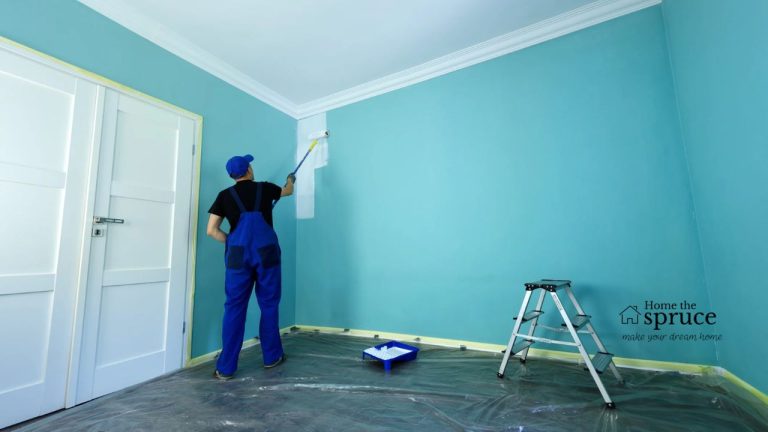Keeping a fresh coat of paint looking pristine over time is no small feat. Over the years, I’ve often found myself admiring a newly painted living room wall only to notice chips, stains, or fading soon after. While paint can invigorate any space, maintaining its charm requires a bit of effort. Let me share some practical tips I’ve picked up along the way to keep your paint looking as vibrant as the day it was applied.
Control the Environment
When it comes to painting, the environment is everything. Humidity can wreak havoc on a paint job. In my experience, it’s imperative to ensure that you paint in dry conditions and control your home’s humidity levels afterward. If your space feels muggy, consider using a dehumidifier to protect paint from peeling and to avoid that stickiness, which can attract dirt.
Another aspect worth considering is ventilation. Proper airflow not only helps with drying freshly applied paint but also maintains it over the longer term. Ventilation helps to combat condensation, which can cause unsightly watermarks on walls. By simply ensuring windows are opened regularly or investing in extractor fans, you can keep your paint in prime condition.
Environmental control isn’t just important indoors. Exterior surfaces can benefit from understanding the climate they face. When dealing with issues related to outdoor maintenance, it might be worth consulting specialized resources such as exterior stucco painters to ensure your exterior walls receive the care and protection they need against harsh weather elements.
Mind the Touch Ups
Scratches and nicks are inevitable, especially in high-traffic areas. To combat this, I keep a small can of touch-up paint at the ready, often tucked away in the garage. Whenever the inevitable scratch appears, I don’t wait. By touching up promptly, I prevent the scratch from expanding and keep the overall color consistent.
In addition to keeping touch-up paint handy, matching the paint finish is equally important. Whether it’s satin, eggshell, or gloss, using the correct finish ensures consistency and prevents any noticeable patches. Always save the original paint can label or a swatch, so you have the right details on hand when you need to replenish your supply.
Clean Your Surfaces Regularly
A little cleaning goes a long way. Dirt and grime can build up quicker than you realize, causing colors to look muted. I’ve found that wiping down walls gently with a damp cloth and mild soap can make a noticeable difference. It’s important to avoid abrasive cleaners; they may scrub away the paint itself. Regular maintenance goes a long way in preserving that coveted clean look.
Another practice to consider is addressing stains as soon as you notice them before they set in. Carefully blot the stain with a soft cloth rather than scrubbing, which can damage the paint. Prompt stain removal can work wonders in keeping your paint looking fresh and new.
Utilize Protective Features
In spaces where furniture frequently touches the walls, such as dining rooms or entryways, it’s wise to use a protective guard or rail. I’ve installed chair rails in the dining room as a barrier, preventing those inevitable chair backmarks from damaging the paint. It’s a small change that offers substantial long-term protection.
Limit Sun Exposure
In rooms bathed in sunlight, it’s natural for paint to fade over time. I’ve mitigated this by using sheer curtains to diffuse direct sunlight, preserving the color intensity. Additionally, considering paint with UV protection can shield your walls from the damaging effects of the sun.
Choose Quality Paint
I’ve learned the hard way that not all paint is created equal. Looking back, I regret the times I chose a cheaper option only to find myself repainting sooner than expected. Investing in higher-quality options may require more upfront, but the durability and longevity will save you time and trouble in the future.
Inspect Regularly
A good habit to adopt is regularly inspecting your walls. Quarterly checks ensure that no damage goes unnoticed. Whether it’s a small chip or an unexpected stain, addressing these quickly keeps the problem from escalating. I’ve made this a routine to maintain the visual appeal of my rooms.
Aside from quarterly inspections, consider seasonal assessments. Changes in weather and temperature can impact paint differently at various times of the year. What may seem fine in the cooler months might reveal issues during warmer seasons. This proactive approach can pre-emptively curb problems, ensuring a consistently beautiful home environment.
Maintaining a pristine paint finish requires diligence, but the payoff is undeniably worth it. A well-kept paint job enhances the beauty of a space, making it inviting and enjoyable for anyone who walks through your doors. So, with these tried-and-true tips, you’ll ensure your home’s interior remains vibrant and fresh for years to come.
Admin Recommendation
Mistakes to Avoid When Repairing Your Home
What Are Manufactured and Modular Homes
What Efficiency Means for the Modern Home













